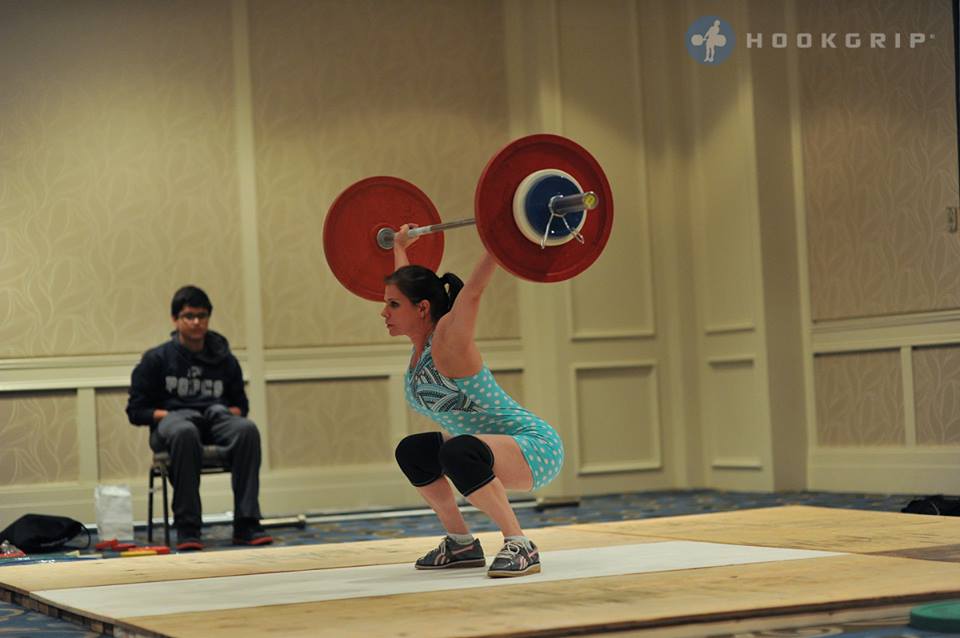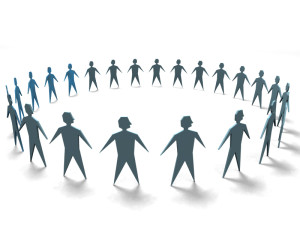Getting ready for Masters Nationals. These are 80-85% snatch singles. I may end up being conservative at the meet though and going for a 40kg snatch which would be 88lbs, making these 85 and 90%. Depends on how I’m feeling. I’m not going for a record, just trying to qualify for worlds this time around. Next year I’d like to bring a 53kg snatch (bodyweight) to the table 🙂
Category: Thoughts & Insights
Recovery
Two weeks before each of my competition begins freak out time for me. The heavier percentages mean more misses. More misses undermine my confidence (that’s just the way my mind’s built).
Rationally I understand that no misses mean I’m not aiming high enough. But misses also highlight all of the things that are wrong with my technique – being slow under the bar despite being strong enough to get the bar high means I miss. That’s partly bar fear and partly technique and partly ingraining the movement pattern better. And ingraining it so it’s faster.
But inevitably some of the issues that are uncovered in those last heavy weeks before deload are my lack of recovery. I’m just as susceptible as the next person to the myth of the Russians and the Bulgarians. Train daily, train hard. Then double that volume and you’ll be a champion.
But a) I’m not on steroids and b) I’m not in my 20’s. So guess what happens when you hit it hard and daily? I’ve been lucky to avoid big injuries, but the little accumulation of fatigue and not resting adds up.
There is good evidence that daily training is feasible and likely even preferable to fewer times per week for both strength gains and ingraining neural patterns. But as a master, I’ve got to be more cognizant that “greasing the skids” (to quote Pavel) doesn’t have to be balls to the wall* each and every time my foot steps inside a gym. It’s okay to focus on one or two movements and their accessories, some mobility and leave. It doesn’t have to be 2+ hours and to failure on every set.
That doesn’t mean not heavy, it just means smarter. Because left to my own devices I’d be in my happy place on the platform with a bar in my hand 6 hours/day.
It also means conceding that Superwoman needs sleep. 8+ hours/night. So I bought a pair of dorky blueblocker sunglasses and started wearing them around 8pm each night so that iPads and computer screen blue light don’t keep me up. The only negative to that is my children announced that I look like an alien and they can no longer take me seriously. Maybe I could spank them with a barbell.
Eating is important, too. I’m one of those people who loses their appetite when I”m stressed (and gee, there’s no stress pre-competition). So I force myself to watch my intake. No “intuitive” eating. That means tracking calories, carbs and protein to make sure I’m getting enough (and not just donuts and protein shakes). It means making sure that I”m not in a position to lose a lot to stay in my weight class in the two weeks before so that I”m not forced to restrict.
With age comes wisdom. And I’m wising up to the fact that I gain a lot of strength in what I do when I’m not in the gym, not just under the barbell.
* interesting fact about the origin of “balls to the wall”. It’s apparently a WWII term from pilots. Pushing the throttle (that had a little ball knob on the top) to the “wall” i.e. all the way forward was kind of like full speed ahead or all out. It’s not as raunchy as it sounds 🙂
It Takes a Village
I had a PR today that wasn’t *exactly* weightlifting related.
4 weeks ago, I started going for weekly sports massages with an amazing local masseur. This was done in desperation. Before the Texas State Championship, I hurt my left knee and couldn’t squat for 6 weeks which clearly hurt my lifts.
Now my right knee was hurting (although my left was finally feeling better). With Masters Nationals coming up, I really – REALLY- could not afford an injury. I had already had an orthopedic colleague check it out and he said it wasn’t a joint or meniscus injury.
So I went to the massage therapist who diagnosed a gastroc-soleus tendon insertion trigger point and worked the hell out of it. But his really important insight was noticing that my toes turned in when lying on the table. He said I had wicked tight adductors and glutes.
I then went on to book weekly massages and as homework did mobility work to stretch all the compartments of my legs (adductors, abductors, quads, hams, ankles, hip flexors).
The PR? Today my massage was fun and relaxing and most importantly…..PAIN FREE. All the other massages hurt like rusty nails being scraped across my cornea because I was tight and a veritable lump of trigger points.
Being a masters lifter means a lot of things. It means making time to work out when you have to go to work for 8-10 hours per day, make dinner for your kids, pay bills, check homework, drive to soccer practice and maybe even occasionally have some grown-up time with your spouse. You’re not a student with a fairly flexible schedule. You’re not even a young adult with only yourself and the cat to worry about. You’re a full bore adult with parents who are aging and starting to need you and kids who are old enough to have lots of important firsts in their lives that need your attention.
You also don’t recover as quickly nor do you just jump up on the platform and start lifting. Warming up is important, so is mobility work when you’re done.
Being a masters lifter requires a patient family who supports your obsession, coaches who can modify programming for your capacity and therapists to help you recover.
It doesn’t just take a village to raise a child. It takes a village to support one aging but ambitious lifter.
And this one is eternally grateful for hers.


